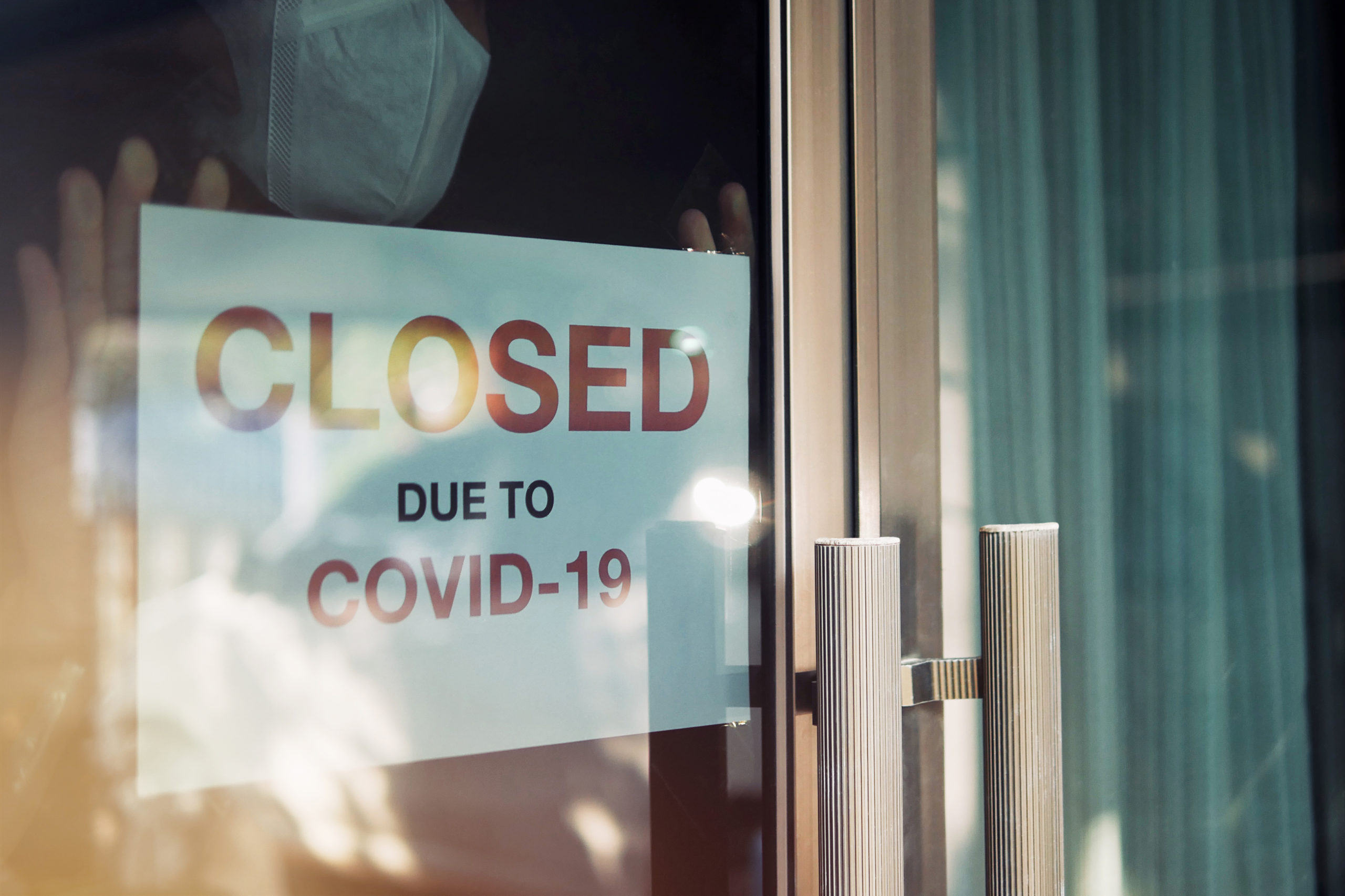As the nation cautiously begins to resume the life we knew pre-pandemic, small businesses must have reopening and recovery strategies. All businesses have had to make difficult choices over the last year, and for many, this meant closing their doors. However, closure or running reduced operations may end up being less complicated than what’s to come.
Many small businesses have accumulated huge debts and now have to contend with new health and safety rules, maintaining productivity with social distancing and uncertainty about retaining an in-house workforce. Many small businesses also have to face suspended supply chains with little knowledge of how or when they’ll be able to make their stock available again.
For small businesses, recovery will take significant work and may involve extended opening hours, careful management of capital, and staff cuts.
Small Business Spending Cuts
With so much uncertainty over the last year, many employers and small business owners voluntarily cut their spending. While some small businesses haven’t had much choice in the matter, others opted to be more frugal due to worries about the potential impact COVID-19 could have on their business and industry. In March 2020, when we were most unsure about what led ahead, both revenue and spending dropped by 40%.
This inclination to be careful with spending has bled into 2021, and many small businesses are reluctant to take on new expenses, such as new team members or agency partners, even if they may lead to further growth. The desire to be in a strong position if circumstances suddenly change is more compelling to most small business owners than experiencing serious growth during uncertain times.
However, things are starting to change. As the COVID-19 vaccine rolls out across the country and many other parts of the world, all small businesses can return to some semblance of normalcy. Small businesses are a huge propellant in helping the economy recover after a recession. While some businesses will be looking to bring back full-time employees, others will turn to the gig economy to fill the gaps until they feel they are in a stronger financial position.
The Trials of Being an Employer
Many small businesses entered the era of Coronavirus with little financial flexibility. Many small businesses’ profit margins were small, even before COVID-19 emerged. Earnings before interest, taxes, depreciation, and amortization (EBITDA) margins are usually less than 5% for small retailers that sell staples like groceries and under 10% for retailers selling discretionary goods.
Aside from the obvious financial struggle of being an employer amidst a global pandemic, there are now several new factors to consider. Employers must now be far more careful with the health and safety of their employees and customers. Many are being forced to change their entire business model based on keeping workers and customers safe.
Another difficulty faced by employers has been the sudden switch to remote work. It’s not been easy for any small business owner, but adapting to a whole new way of work literally overnight is a challenge no one ever expected to face. It required patching together a solution that could competently allow everyone to communicate, collaborate, and share files and information seamlessly.
While remote work was something we were all forced to try, it’s here to stay for many businesses. Among business owners with remote workers, nearly two-thirds said they’ll likely allow employees who hadn’t previously worked from home to continue to do so. Not only has it been seen to improve employee happiness and loyalty, but it can also save money on rent and more.
Fortunately, in many cases businesses have been able to help each other lessen the financial strain caused by government-imposed lockdowns. Some have granted grace periods for monthly fees while others have suspended contracts and early termination fees.
Which Businesses Were Worst Affected By the Pandemic?
It’s no secret that every industry that depends on face-to-face interaction has suffered a huge blow throughout the pandemic. However, some industries have faced special challenges:
Restaurants, cafes and bars have faced massive profit margin challenges. Transitioning to serving customers off-premises by providing delivery or takeout can increase packaging costs and affect the popularity of higher-margin items like desserts, aesthetically driven dishes and alcohol. Many small businesses were already struggling before COVID’s arrival. Almost 40% of small restaurant businesses make a monthly and annual loss or just about break even.
The increased costs involved in accommodating customers’ new expectations will likely further damage restaurants’ already slim operating margins. However, those who can pivot to meet the new health and safety needs of customers should have a good opportunity to serve a public eager to get out and about once more.
The arts, entertainment and recreation industry has faced a troubling hit, with music venues and theaters being closed for almost a year. Some, unfortunately, were forced to close their doors for good. Many freelance musicians, dancers, actors and artists have had to apply for universal credit and stimulus checks sent to a taxpayer by the American government. Stimulus checks have been distributed to millions of Americans to boost consumption and stimulate the economy, which has been essential to keeping those working in this industry going.
The hospitality industry has also suffered consistent loss over the past year, with travel tourism largely grinding to a halt. Airlines, hotels, tourist attractions and other accommodation services haven’t been able to rely on their usual influx of tourists. While this is starting to change, few locations can operate at full capacity, and travel from Europe is still banned, which closes off a huge market.
Other industries that have suffered as a result of COVID-19 include transportation and warehousing, manufacturing, retail trade and real estate.
More small businesses closed permanently between February and March than in April and May, and non-essential businesses such as beauty salons, gyms and restaurants were among the hardest hit.
The Road to Recovery
While some small businesses haven’t managed to survive COVID-19, others can start reopening and growing over the next year. Of course, generating enough capital to survive a global pandemic is easier said than done. But flexibility and adaptability will give businesses a much higher chance of success.
Here are some tips on how to start recovering as a small business:
- Define your support system. Whether you’re a small family business or employ a hundred people, you always need to know who has your best interests at heart. These bubbles may consist of your immediate family or household members, business partners and other local businesses.
- Be adaptable and flexible. If you’re married to the way you ran your business pre-pandemic, you’ll likely find it difficult to succeed. The way business is done changed dramatically this year, and you’ll need to be a little more open-minded and willing to think on your feet. You may have to move with the times and adapt to new technologies that allow your employees to work remotely. You may need to learn about new ways of providing your service while maintaining social distancing and a higher level of health and safety diligence. Adaptability, flexibility and a willingness to accept change are three vital traits of any business owner.
- Establish what your business needs to recover and survive the next year. Create at least one recovery plan that outlines how you plan to recover and some more expansive actions you can put into place once the dust has settled.
- Don’t be afraid to take a hard look at your financials. et your cash flow in order; look at your financial priorities, figure out what is likely to change in the immediate future and look at any forms of financial assistance you may be eligible for. It can be tempting to leave that to your bookkeeper or financial team, but make sure you know exactly where you stand so you can make the best decisions moving forward.
- Re-organize your supply chain, if necessary and applicable. Find out how well your existing facilities and supply lines are set up to meet post-COVID expectations. Ask your suppliers how they have been affected by COVID-19 and establish whether you should expect any inventory shortages over the next few months. If you sourced your materials from overseas, where they are still experiencing delays, could you find a domestic supplier?
- Don’t panic, and trust yourself – you’ve got your business this far. The past 12+ months have thrown us a lot of curveballs, and it can be tempting to have knee-jerk reactions when you’re under pressure, especially when you’re responsible for others’ incomes. When you’re faced with adversity in business, stop and ask yourself what you want to achieve and if your actions will help in this situation. Impulsive behavior often backfires and results in unpredictable and undesirable circumstances. You’ve got your business through the hardest times, and now things can improve, so trust yourself when you’re making decisions.
- Keep lines of communication open with your team. This pandemic has caused much upheaval, and the best way to assess if things work is called “rapid prototyping.” Look at your business plans as experiments, and you’ll be far more open-minded and prepared when new challenges emerge. You’ll be able to react quickly, and you’ll have a team who is up-to-date on everything they need to know.
Communicating also involves asking for help when you need it. It’s uncomfortable for many of us, but many businesses wouldn’t have survived the last year if they hadn’t reached out. COVID-19 has caused many people to struggle, and nobody can help you if no one knows you’re in need. Don’t be afraid to reach out to other businesses in your community and other vendors that serve the same client as you to see if you can work together to create a better experience for your customers.
There are so many things to consider as a small business owner. Not only are you providing a product or service to customers, but you’re also responsible for the livelihood of others who may also have been struggling. Coronavirus has caused a huge amount of anxiety, but it has also spurred people to work together more than ever. It has shown us the value of collaboration, adaptability and a genuine drive to do well for our businesses, communities and families. And while there’s no magic formula for re-emerging after an incredibly difficult year, those businesses who do survive will have made it through the biggest crisis any business could encounter.





